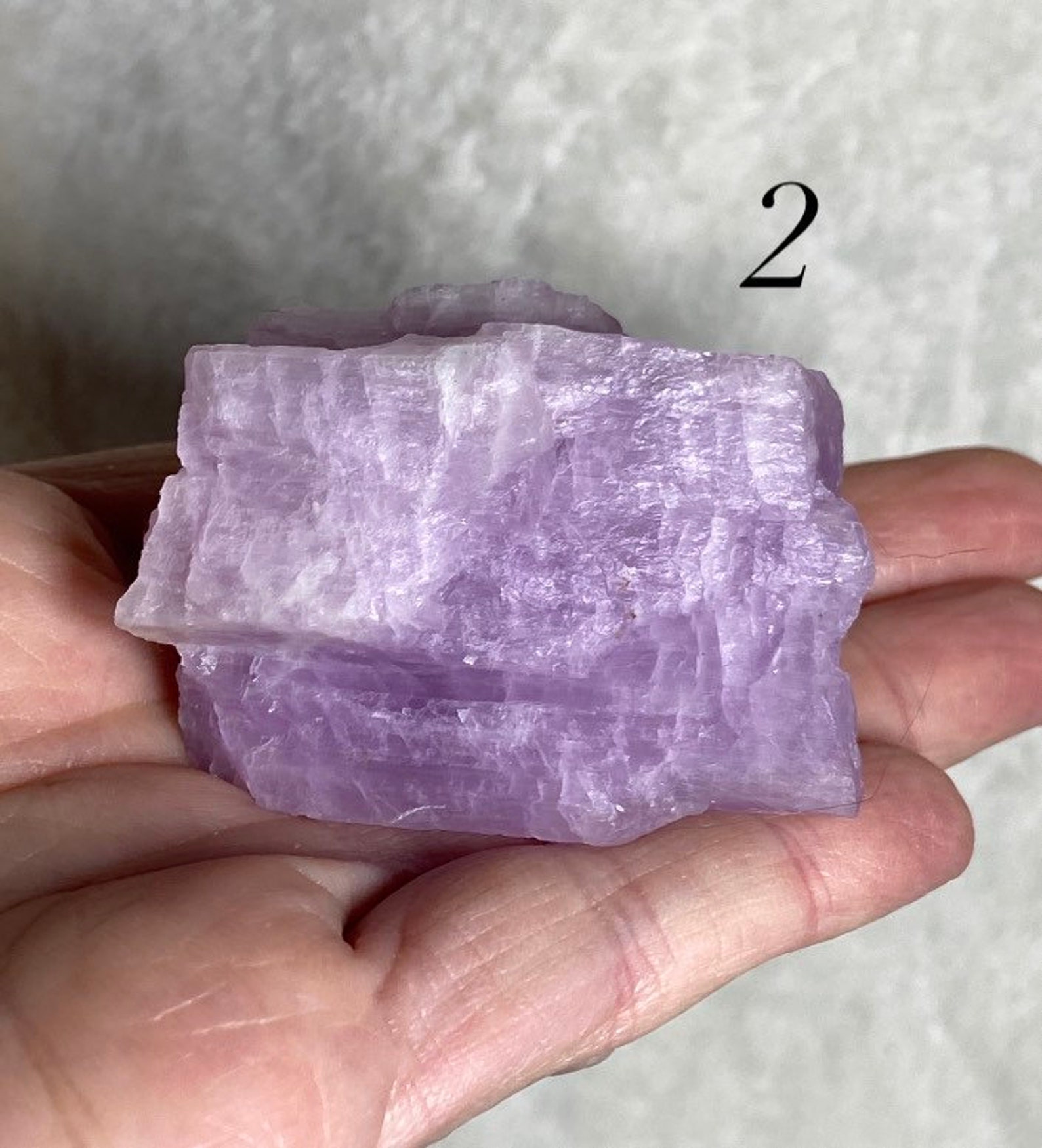

It was originally thought to be a translucent gemmy Diopside, but was soon correctly identified as Spodumene. In 1879, Hiddenite, the green variety of Spodumene was collected in North Carolina, USA.

He named it Spodumene, from the Greek spodumenos, or “burnt to ashes,” on account of that particular mineral’s ash-grey color. It came to Andrada e Silva’s attention while he was working as professor of geology at the University of Coimbra, Portugal. The original mineral was opaque and grey, and came from a deposit in Sweden. Spodumene was first described in 1800 by the Brazilian naturalist, Jose Bonifacio de Andrada e Silva (1763-1838). It is a relatively “new” stone to the metaphysical community and so is not included in any old lapidaries, texts which describe gemstones and their power. Kunzite is the gemstone variety of the mineral Spodumene. It asks us to always think, “what would Love do?” Kunzite helps us to focus on solutions, rather than dwelling on problems. Kunzite teaches us that constructive criticism is a helpful gift meant to help us grow and improve, rather than a rejection of who we currently are It helps us to remove mental blocks and obstacles that seemingly prevent us from moving forward towards our goals and along our path. Such a sight, always reminds us that we ourselves can bring love and light into the situation. But rather an exceptionally compassionate point of view, which helps us to see the humanity and potential for goodness. This love-filled vision is not the optimistic rose-tinted glasses that allows us to ignore uncomfortable truths. It unites our intellect with out intuition, and our sense of logic with our heart’s “inner knowing.” Together, this allows us to see very clearly and honestly, while gazing at the world with love. Kunzite helps us to stay calm and collected, regardless of our circumstances.


 0 kommentar(er)
0 kommentar(er)
